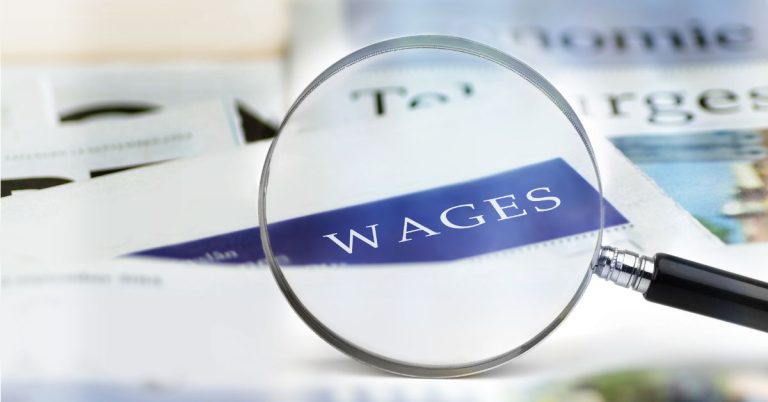HR Leaders: Return-to-Workplace Complete Guidelines
As the COVID-19 pandemic continues, businesses are facing unprecedented challenges. In addition to the economic fallout caused by the outbreak, companies are now dealing with the impact on employee health, safety, and well-being. This includes the potential spread of disease within the workforce and the possibility of employees spreading it outside of the office. With the return-to-work process underway, organizations need to take steps to ensure the safety of both employees and customers.
In response to the coronavirus outbreak, HR leaders across industries are developing plans for safe returns to work. These plans should address issues such as maintaining physical distancing and sanitation standards, ensuring proper PPE use, and communicating effectively with employees.
To help guide you through the planning and implementation stages, we’ve developed Return-to-Work Plan Checklist, a toolkit designed to assist HR professionals in creating a comprehensive return-to-work strategy.

Keeping the workplace safe
Employers have legal obligations to provide a healthy environment for employees. If you work in a healthcare setting, it is important to understand how COVID19 affects your job duties. You must follow strict infection control procedures to ensure the safety of your patients and yourself. Here are some tips to help keep the workplace clean and safe during this pandemic.
When to return?
Employees need to feel confident that they have a plan should a new case surge occur. They need to feel safe. And they need to know what to do once they’re back.
Who returns first?
The number one question I hear from managers about remote work is “who returns first”? This is a critical question because it tells you how much value each person brings to the team. If someone leaves early, there are fewer hours left to complete projects. If someone stays late, there are still hours left to finish up. Either way, productivity suffers.
In my experience, most people return within three weeks. Some take longer. But even those who don’t come back often find ways to contribute remotely. They’re just less visible.
So what do we know about who returns first? Here are some key findings:
• People who are highly engaged tend to return sooner.
• Those who are working remotely full-time are more likely to return earlier than part-timers.
• Part-timers who report feeling like they belong to the organization are more likely to return later.
• Remote workers who feel disconnected from the rest of the team are more likely to return early.
What is necessary in the brand-new workplace?
The coronavirus pandemic has forced many companies to rethink how they operate. As we look toward the future, it’s important to remember what matters most—the employee experience. In today’s world, employers must focus on creating a safe environment where employees feel comfortable and supported during this unprecedented time. To do this, you need to understand the impact COVID-19 is having on the workforce. You also need to think beyond the traditional HR function and consider how technology can support the needs of your team members.
To start, let’s take a closer look at some of the key trends affecting the way businesses are operating today.
Employee Experience & Safety Comes First
As we navigate the current situation, it’s clear that people are our greatest asset. We know that the best way to ensure everyone stays healthy is to keep them home. But while this is happening, we need to make sure we’re doing everything possible to protect those who remain working. This includes ensuring that workplaces provide a safe environment for both employees and customers.
In fact, according to a recent survey conducted by WorkplaceTrends, nearly half (49%) of respondents say they believe their organization is failing to properly address the risks associated with the spread of COVID-19. And while there is no one size fits all solution, here are three steps that every employer can take to improve employee health and safety.
1. Provide training on the latest guidelines
Training is critical to making sure everyone understands the importance of social distancing and staying six feet away from others. If your organization doesn’t already offer such training, now is the perfect opportunity to develop a plan that addresses the specific needs of your team.
Employers are required to
Employers have a duty of reasonable care towards people who come into contact with their workplaces. This includes ensuring that there are adequate measures in place to protect against COVID19.
Risk assessment involves considering what actions could lead to harm being caused to someone else. These might include things like how easily it is possible for someone to contract the virus. For example, if you work in a hospital, you may need to consider whether you need to wear protective equipment such as masks and gloves. You may also need to consider whether it is safe to go home early, even though you feel well enough to do so.
Consideration of COVID19 should include taking action to reduce risks where possible. This may involve changing working practices, for example moving meetings online, reducing office hours, closing premises or cancelling events.
What employers should consider
Employers have legal obligations to protect the health, safety and wellbeing of their workers. This includes ensuring that workplaces are safe and healthy environments where people can work productively without fear of harm.
Risk assessments should take into account the potential impact of COVID-19. In particular, it is essential to assess whether there might be increased risks to vulnerable groups such as older adults, pregnant women, those with underlying medical conditions, children under 5 and anyone who is immunocompromised.
Consideration of coronavirus should be included in risk assessments. There is no evidence that the virus spreads easily among members of the public. However, some countries have reported cases of COVID-19 within their borders. If you think that your workplace could be affected by the virus, contact your local Public Health Agency. They can provide advice about how best to manage the situation.
Cleaning and ventilation
Employers must ensure that workers are hygienic and clean, and that there is good ventilation in workplaces. This includes ensuring hand washing facilities are easily accessible and employees wash hands regularly.
There is a risk of contracting Covid19 if an employee or visitor contacts someone who has already tested positive for the virus.
Ventilation helps prevent the spread of infectious diseases such as Covid19.
Vaccinations
There’s no law saying you have to vaccinate yourself against the coronavirus. But some employers might want to agree to a vaccination policy where employees are required to do so. And it’s important to know what the law says about vaccinations.
The Vaccination Requirements Act requires schools and daycare centers to provide immunizations for certain diseases, including measles, mumps, rubella, chickenpox, polio, diphtheria, tetanus, pertussis, hepatitis B, influenza, rotavirus, varicella and meningococcal disease.
But there are exemptions. If someone doesn’t want to get vaccinated because they don’t believe in vaccines, they can ask their school district for an exemption. They can also apply for an exemption online.
If your child attends public school, he or she must receive a full course of immunization. Private schools aren’t subject to state laws requiring children to be vaccinated.
Some states require parents to sign consent forms allowing their children to attend school without being fully vaccinated. In those cases, the school district must notify parents of the requirement.
In addition, some employers might want to consider agreeing to a vaccination policy where workers are required to get shots. This could include flu shots, but it could also cover things like Hepatitis A and B.
Frequently Asked Questions
How to be mentally healthy at work
Mental health problems are common among workers. They affect up to one third of employees each year, according to research published in the Journal of Occupational and Environmental Medicine. Mental health issues include depression, anxiety and stress.
Poor mental health can lead to absenteeism and presenteeism – missing work because of illness, and being less productive while at work. Poor mental health can also impact relationships, job performance and productivity, and lead to early retirement.
This guide provides practical advice on ways to improve your mental well-being at work. You will learn about the causes of poor mental health; understand why it affects people differently; discover tips for managing symptoms such as anxiety and stress; and find out how to access help and support.
You will also learn about resources that can help you manage your mental health better, including local organizations that provide free counseling and training.
can an employer require covid testing before returning to work?
1. Yes, employers may request COVID-19 test results prior to employees returning to work. Employers have the right to protect their workers from potential exposure to COVID-19. If an employee refuses to submit to a COVID-19 test, they could face discipline under federal law.
2. An employer may not ask about an employee’s medical condition unless doing so is necessary to determine whether the employee should return to work. However, if an employer does need to know about an employee’ s medical condition, the employer may do so without violating HIPAA privacy rules.
3. Employees who refuse to take a COVID-19 antibody test cannot be fired or disciplined for refusing to comply with an employer’s requirement to undergo a COVID-19 screening.






